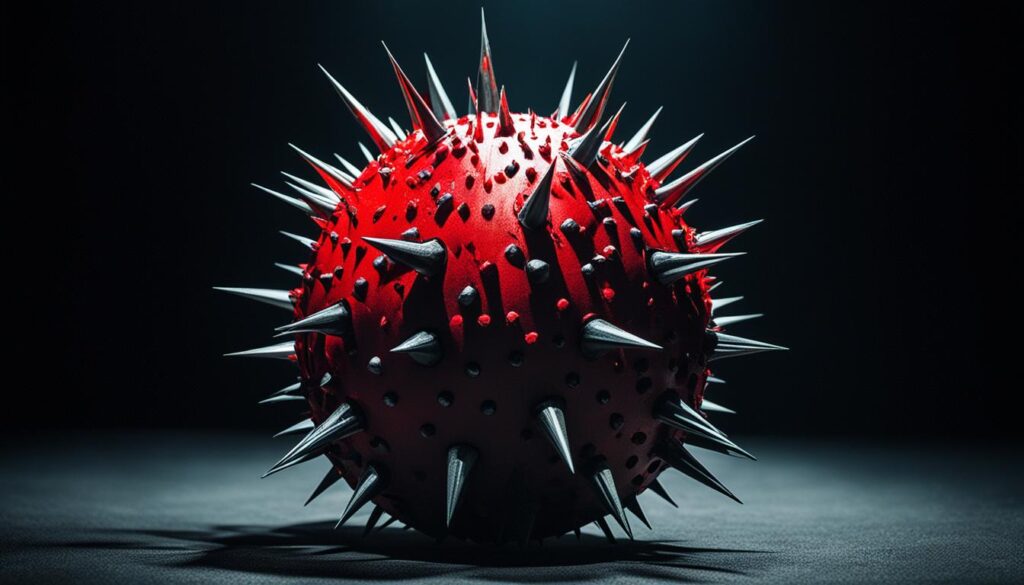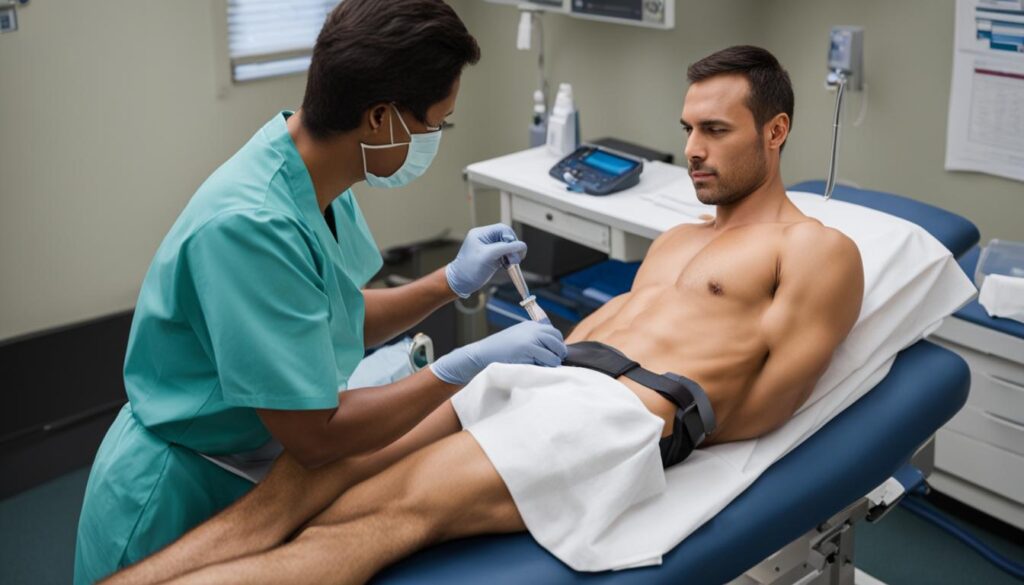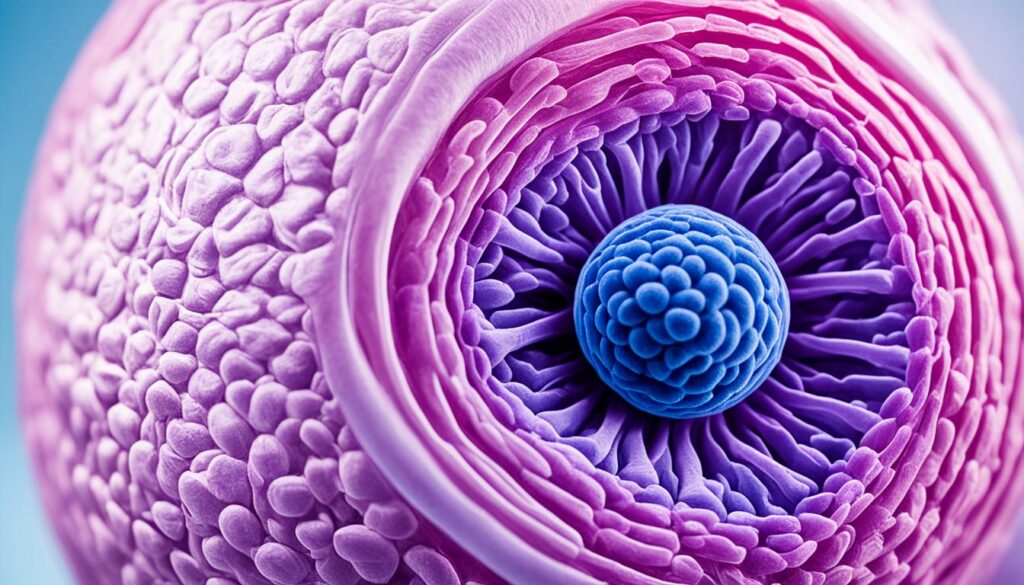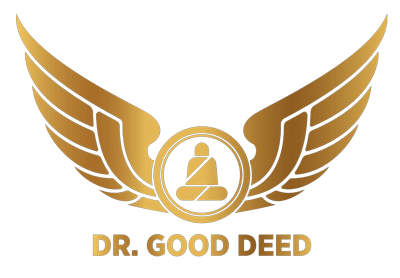Medically reviewed by Dr Chandril Chugh,
Renowned Neurologist and American Trained Specialist
Testicular pain can affect anyone with testicles at any age. It can be acute or chronic, with chronic pain lasting for a long period. If you are experiencing chronic right testicular pain, it’s important to seek medical attention.
Table of Contents
ToggleIf the pain lasts for more than an hour or is accompanied by other symptoms such as swelling or nausea, it could be indicative of an underlying issue. There are various causes of chronic right testicular pain, including infections, trauma, tumors, or structural disorders. To determine the cause, a healthcare provider may conduct a physical examination, review your medical history, and order imaging tests.
Treatment options for chronic right testicular pain range from conservative therapy to surgical interventions, depending on the underlying cause. It’s essential to consult with a healthcare professional to develop an individualized treatment plan that addresses your specific needs.
Key Takeaways:
- Chronic right testicular pain can last for a long period and should not be ignored.
- Consult a healthcare professional if the pain lasts for more than an hour or is accompanied by other symptoms.
- Causes of chronic right testicular pain can include infections, trauma, tumors, or structural disorders.
- Diagnosis may involve a physical examination, medical history review, and imaging tests.
- Treatment options range from conservative therapy to surgical interventions, depending on the underlying cause.
What is Testicular Pain?
Testicular pain can be a distressing experience, affecting one or both testicles. It can originate from the testicles themselves or other parts of the body, leading to referred pain. Understanding the nature of testicular pain is crucial in determining the appropriate course of action.
There are two main categories of testicular pain: acute and chronic. Acute testicular pain develops suddenly and lasts for a short duration, often resulting from a specific incident or injury. On the other hand, chronic testicular pain persists for a longer period, gradually worsening over time.
Testicular pain is often a result of the high concentration of sensitive nerves in the testicles. Even minor injuries or conditions affecting the testicles can cause significant discomfort. Additionally, testicular pain can be due to referred pain, where pain originating from other parts of the body is felt in the testicles.

Testicular pain can range from mild discomfort to severe agony, impacting your daily life and overall well-being. Understanding the differences between acute and chronic testicular pain can help you seek appropriate medical attention and find relief.
Causes of Testicular Pain
Testicular pain can have various causes, ranging from conditions within the scrotum to those originating outside of it. Understanding the underlying factors can help in identifying and managing testicular pain effectively.
Common causes of testicular pain include:
- Epididymitis: Inflammation of the coiled tube at the back of the testicle.
- Hydrocele: Accumulation of fluid in the scrotum, leading to swelling.
- Orchitis: Inflammation of one or both testicles.
- Scrotal masses: Tumors or abnormal growths in the scrotum.
- Spermatocele: A fluid-filled sac near the top of a testicle.
- Testicle injury: Trauma or damage to the testicles.
- Testicular torsion: Twisting of the testicle, leading to a restricted blood supply.
In addition to these localized causes, testicular pain can also be a symptom of conditions that start outside the scrotum. These include:
- Diabetic neuropathy: Nerve damage resulting from diabetes affecting the testicles.
- Henoch-Schonlein purpura: An immune system disorder causing inflammation in blood vessels.
- Inguinal hernia: A condition in which part of the intestine bulges through the abdominal wall into the groin area.
- Kidney stones: Hard deposits formed in the kidneys that can cause referred pain to the testicles.
- Mumps: A viral infection that commonly affects the salivary glands but can also cause testicular inflammation.
- Prostatitis: Inflammation of the prostate gland, which can cause discomfort in the testicles.
- Urinary tract infection: An infection in the urinary system that can lead to testicular pain.
It’s important to consult a healthcare professional for an accurate diagnosis and appropriate treatment based on the underlying cause of testicular pain.

Recognizing Serious Testicular Pain
It’s crucial to recognize when testicular pain may indicate a serious problem. Understanding the signs and symptoms that require immediate medical attention can help prevent further complications. If you experience any of the following, it’s important to seek prompt medical care:
- Sudden and intense pain: If you experience a sudden onset of severe pain in one or both testicles, it could be a sign of a serious condition.
- Nausea and vomiting: Testicular pain accompanied by nausea and vomiting may indicate a more serious underlying cause.
- Abdominal pain: If testicular pain is accompanied by abdominal pain or discomfort, it’s important to seek medical attention as it could be indicative of a serious condition.
- Swelling: Testicular pain accompanied by swelling or redness in the scrotum should not be ignored.
- Persistent pain: If the testicular pain lasts for more than an hour and doesn’t improve with rest, it’s recommended to seek immediate medical attention.
“Recognizing the signs of serious testicular pain and seeking prompt medical attention can help prevent potential complications and ensure appropriate treatment.”
When in doubt, it’s always better to err on the side of caution and consult a healthcare professional. Proper medical evaluation and diagnosis are crucial for identifying and treating any underlying conditions that may be causing the pain.

Risk Factors for Testicular Pain
While testicular pain can affect anyone with testicles at any age, certain factors may increase the risk of developing it. Individuals who engage in heavy physical work or play contact sports like baseball, football, hockey, soccer, lacrosse, or martial arts may be at a higher risk due to the potential for testicle trauma or injury.

Heavy physical work and contact sports involve activities that can put excessive strain on the testicles. The risk factors associated with these activities include:
- Direct impact or trauma to the testicles from collisions, falls, or hits.
- Repetitive movements or actions that place stress on the testicles.
- Twisting or torsion of the testicles during physical exertion.
It is important to note that while engaging in heavy physical work or contact sports may increase the risk of testicular pain, it does not guarantee the development of this condition. However, individuals involved in these activities should be aware of the potential risks and take appropriate precautions to protect their testicles.
It’s essential to wear protective gear, such as a cup or jockstrap, during contact sports to minimize the chances of testicle injury. Taking regular breaks, using proper form and technique, and implementing core strengthening exercises can also help reduce the risk of testicular pain associated with heavy physical work.
By understanding the risk factors and taking preventive measures, individuals can minimize the likelihood of experiencing testicular pain while still engaging in activities they enjoy.
Diagnosis of Chronic Right Testicular Pain
Diagnosing chronic right testicular pain requires a comprehensive evaluation by a healthcare provider. This evaluation involves a combination of physical examination, review of your medical history, and the use of imaging tests. By conducting a thorough assessment, the aim is to identify any underlying causes or contributing factors that may be responsible for your chronic right testicular pain. This information is essential in guiding appropriate treatment options to relieve your symptoms.
During a physical examination, your healthcare provider will carefully examine the affected area, including the testicles and surrounding structures. They will look for signs of inflammation, swelling, or any abnormalities that may be causing your pain. It is important to communicate any specific details about your pain, such as its duration, intensity, and any factors that worsen or alleviate it.
In addition to the physical examination, your medical history will also be reviewed. Your healthcare provider will ask you questions about your symptoms, when they first started, any previous injuries or medical conditions, and any treatments you have tried in the past.
To further evaluate the underlying causes of chronic right testicular pain, your healthcare provider may order imaging tests such as ultrasound. Ultrasound imaging uses sound waves to create detailed images of the testicles and surrounding structures. It can help identify any structural abnormalities, infections, or tumors that may be contributing to your pain.
By combining the findings from the physical examination, medical history review, and imaging tests, your healthcare provider can establish a diagnosis and develop a personalized treatment plan tailored to address the underlying causes of your chronic right testicular pain.

Treatment Options for Chronic Right Testicular Pain
Treatment for chronic right testicular pain will depend on the underlying cause. Initially, conservative therapy may be recommended to alleviate symptoms and improve quality of life. This can include a combination of pain management techniques, lifestyle modifications, and physical therapy.
Conservative therapy for chronic right testicular pain may involve:
- Over-the-counter pain relievers, such as acetaminophen or ibuprofen, to manage discomfort.
- Hot or cold packs applied to the affected area to reduce inflammation and alleviate pain.
- Rest and avoiding activities that worsen the pain.
- Wearing supportive underwear or using scrotal support devices to provide additional comfort and stability.
- Engaging in relaxation techniques, such as deep breathing or meditation, to manage stress and promote overall well-being.
If conservative treatments prove ineffective, surgical interventions may be considered. The decision to undergo surgery will depend on the specific needs of the individual and the severity of their condition.
Surgical interventions for chronic right testicular pain can include:
- Spermatic cord blocks: This procedure involves injecting local anesthetics or anti-inflammatory medications into the spermatic cord to block the transmission of pain signals.
- Varicocelectomy: A surgical procedure aimed at removing or sealing off varicose veins within the scrotum, which can help alleviate pain associated with varicocele.
- Epididymectomy: Surgical removal of a portion or the entire epididymis, which can be beneficial for individuals with chronic epididymitis or a blocked epididymal duct.
- Microsurgical denervation of the spermatic cord (MDSC): A procedure in which the nerves responsible for transmitting pain signals from the testicles are identified and selectively cut or removed.
Note: Surgical interventions should only be considered after a thorough evaluation by a healthcare professional and a discussion of the potential risks, benefits, and expected outcomes.
By tailoring the treatment plan to address the specific needs and underlying causes of chronic right testicular pain, healthcare professionals can provide individuals with improved pain relief and enhance their overall quality of life.
Etiology of Chronic Orchialgia
Chronic orchialgia is characterized by persistent testicular pain that lasts for three months or more and significantly bothers the patient. The etiology of chronic orchialgia can vary, with identifiable organic factors accounting for some cases, while others remain idiopathic.
Identifiable causes of chronic orchialgia may include:
- Structural disorders
- Infection
- Trauma
- Tumors
- Torsion
- Epididymitis
- Low back strain
- Vasculitis
These factors can contribute to testicular pain and discomfort. However, it’s important to note that approximately 25% to 50% of chronic orchialgia cases are classified as idiopathic, meaning the cause is unknown.

In addition to identifiable causes, psychological factors can also play a role in chronic orchialgia. Chronic pain, depression, and somatization disorder are examples of psychological factors that may contribute to the condition.
Understanding Idiopathic Chronic Orchialgia
Idiopathic chronic orchialgia refers to cases where no identifiable cause can be found for the persistent testicular pain. Despite extensive evaluation and diagnostic efforts, the underlying reason for the pain remains unknown. This can make treatment and management of the condition more challenging.
Quotes:
“Identifying the cause of chronic orchialgia is crucial for appropriate treatment. However, in cases where the etiology is unknown, a holistic approach that incorporates pain management techniques and addresses psychological factors becomes essential.”
– Urologist
| Cause | Percentage of Cases |
|---|---|
| Identifiable Causes | 50% |
| Idiopathic Causes | 50% |
Evaluation and Management of Chronic Orchialgia
The evaluation of chronic orchialgia can be challenging due to its often unclear underlying cause. To determine the specific factors contributing to the condition, a thorough examination is conducted, which includes laboratory analysis and diagnostic imaging.
During the evaluation process, laboratory analysis helps identify any abnormalities in hormone levels, infection markers, or other relevant indicators. Diagnostic imaging techniques such as ultrasound, magnetic resonance imaging (MRI), or computed tomography (CT) scans can provide detailed visuals of the testicles and surrounding structures, aiding in the detection of any structural abnormalities or tumors.
Once the evaluation is complete and the underlying cause is identified, a treatment plan can be developed. Conservative therapy is usually the first line of management for chronic orchialgia, involving non-surgical approaches such as:
- Pain management: Medications, including analgesics or anti-inflammatory drugs, may be prescribed to alleviate pain and reduce inflammation.
- Lifestyle modifications: Adjustments to daily activities, such as avoiding strenuous exercise or wearing supportive underwear, can help alleviate symptoms.
- Physical therapy: Specific exercises and techniques may be recommended to improve blood flow, reduce muscle tension, and alleviate pain in the testicular area.
If conservative treatments prove ineffective or if the underlying cause requires surgical intervention, various surgical options may be considered. These options include:
- Spermatic cord blocks: An anesthetic is injected into the spermatic cord to block pain signals.
- Varicocelectomy: Surgical removal or ligation of enlarged veins in the scrotum that may be causing pain.
- Epididymectomy: Surgical removal of the epididymis, the coiled tube located at the back of the testicle, if it is the source of the pain.
- Vasovasostomy: Surgical procedure to reconnect the vas deferens after previous surgical sterilization.
- Microsurgical denervation of the spermatic cord (MDSC): The selective removal of nerves within the spermatic cord to alleviate pain.
- Botulinum toxin injections: Injection of botulinum toxin into the spermatic cord to temporarily block pain signals.
- Orchiectomy: Surgical removal of one or both testicles, considered as a last resort when all other treatment options have failed.
The choice of surgical intervention depends on the specific diagnosis and the individual’s unique circumstances. Your healthcare provider will guide you through the decision-making process to determine the most suitable course of action for managing your chronic orchialgia.

Summary of Evaluation and Management of Chronic Orchialgia
| Evaluation | Management |
|---|---|
| Thorough examination | Conservative therapy |
| Laboratory analysis | Surgical interventions |
| Diagnostic imaging |
Interprofessional Strategies for Chronic Orchialgia
Effective management of chronic orchialgia often requires a multidisciplinary approach. An interprofessional team consisting of healthcare providers, urologists, pain specialists, psychologists, and physical therapists can collaborate to evaluate, diagnose, and treat the condition. Coordinated care and open communication among team members are crucial for improving outcomes and patient satisfaction.
Benefits of an Interprofessional Team
An interprofessional team brings together experts from different fields who contribute their unique perspectives and skills to develop comprehensive treatment plans for patients with chronic orchialgia. By collaborating and sharing knowledge, these professionals can assess the condition from various angles and tailor interventions to address both the physical and psychological aspects of the pain.
Roles within the Interprofessional Team
Each member of the interprofessional team plays a crucial role in managing chronic orchialgia:
- Healthcare providers: Conduct initial evaluations, assess overall health, and coordinate care
- Urologists: Diagnose and treat conditions specific to the male reproductive system
- Pain specialists: Provide expertise in pain management techniques and interventions
- Psychologists: Address psychological factors associated with chronic pain and offer counseling or therapy
- Physical therapists: Develop personalized exercise programs and provide hands-on therapy
Care Coordination and Communication
To ensure seamless and effective care, the interprofessional team must prioritize care coordination and maintain open lines of communication. This includes:
- Regular team meetings to discuss patient progress and modify treatment plans
- Shared electronic health records to facilitate information exchange
- Collaborative decision-making to ensure all perspectives are considered
- Clear communication channels between team members and the patient
Improving Outcomes and Patient Satisfaction
The interprofessional approach to chronic orchialgia management has the potential to improve outcomes and increase patient satisfaction. By addressing the physical, psychological, and social aspects of the condition, patients receive comprehensive care that targets the root causes of their pain. This holistic approach can lead to reduced pain intensity, improved quality of life, and better overall treatment outcomes.
Implementing interprofessional strategies for chronic orchialgia ensures that patients receive comprehensive and personalized care from a team of experts. Through coordinated care, open communication, and a multidisciplinary approach, the interprofessional team maximizes the chances of effectively managing chronic orchialgia and achieving positive patient outcomes.

Psychological Factors in Chronic Orchialgia
Chronic orchialgia is not only characterized by physical symptoms but also influenced by psychological factors. Patients with this condition often have coexisting pain disorders, such as chronic pain in other areas of the body, and psychological conditions like depression. Addressing these psychological factors is crucial for achieving comprehensive pain management and improving the overall well-being of the patient.
Understanding the psychological aspects of chronic orchialgia can help healthcare providers develop more effective treatment strategies. Pain disorders, including chronic orchialgia, can have a significant impact on the mental health of individuals. The persistent pain experienced by patients with chronic orchialgia can lead to feelings of frustration, despair, and reduced quality of life.
Depression is a common psychological condition associated with chronic pain disorders like chronic orchialgia. It can exacerbate the perception of pain and make coping more challenging for patients. Therefore, addressing depressive symptoms and providing appropriate support is essential in managing chronic orchialgia effectively.
“Pain and the emotional state are intimately related. Understanding and addressing the psychological factors involved in chronic orchialgia is crucial for improving treatment outcomes and enhancing the overall well-being of patients.” – Pain Specialist
Integrating psychological interventions, such as cognitive-behavioral therapy (CBT), into the treatment plan for chronic orchialgia can be highly beneficial. CBT aims to identify and modify negative thoughts, emotions, and behaviors associated with pain. It provides patients with coping skills, stress management techniques, and a better understanding of the mind-body connection.
Psychological Factors in Chronic Orchialgia
| Psychological Factors | Impact on Chronic Orchialgia |
|---|---|
| Depression | Increases pain perception and reduces quality of life |
| Anxiety | Amplifies pain sensations and exacerbates symptoms |
| Stress | Triggers pain flares and hampers pain management |
| Maladaptive coping strategies | Impedes effective pain management and recovery |
Conclusion
Chronic right testicular pain can be a distressing condition with various underlying causes. It is important to seek medical attention if you experience persistent or severe symptoms. Through a comprehensive diagnosis and personalized treatment plan, relief from chronic right testicular pain is attainable.
Collaborating with healthcare providers is essential to identify the specific cause of your pain and determine the most appropriate treatment options. Whether it’s conservative therapy or surgical interventions, the goal is to alleviate your symptoms and improve your quality of life.
In addition to addressing the physical aspects of chronic right testicular pain, it is crucial to consider any psychological factors that may contribute to your condition. Managing psychological factors, such as pain disorders and depression, can play a significant role in effective pain management and overall well-being.
By actively participating in your treatment plan and working closely with your healthcare team, you can find relief from chronic right testicular pain and experience improved long-term outcomes. Remember, you don’t have to face this alone. Reach out for professional help and take the necessary steps towards a pain-free and fulfilling life.
FAQ
What is testicular pain?
Testicular pain refers to pain felt in one or both testicles and can be acute or chronic. Acute testicular pain develops suddenly and lasts for a short period, while chronic testicular pain gradually worsens and persists for a long time.
What are the causes of testicular pain?
Testicular pain can be caused by various factors, including infections, trauma, tumors, or structural disorders. It can also be a symptom of conditions that start outside the scrotum, such as diabetic neuropathy, mumps, or urinary tract infection.
When should I seek medical attention for testicular pain?
It is recommended to seek immediate medical attention if you experience sudden, intense testicular pain accompanied by nausea, vomiting, abdominal pain, swelling, or if the pain lasts for more than an hour and doesn’t improve with rest. These symptoms could be signs of conditions that require urgent treatment.
What are the risk factors for testicular pain?
Individuals who engage in heavy physical work or play contact sports like baseball, football, hockey, soccer, lacrosse, or martial arts may have a higher risk of developing testicular pain due to the potential for testicle trauma or injury.
How is chronic right testicular pain diagnosed?
The diagnosis of chronic right testicular pain involves a physical examination, review of medical history, and may include imaging tests such as ultrasound to assess the testicles and surrounding structures.
What are the treatment options for chronic right testicular pain?
Treatment for chronic right testicular pain depends on the underlying cause. It may involve conservative therapy such as pain management and lifestyle modifications, or surgical interventions like spermatic cord blocks, varicocelectomy, or microsurgical denervation of the spermatic cord.
What is the etiology of chronic orchialgia?
Chronic orchialgia can be attributed to various causes, including identifiable factors such as structural disorders, infection, trauma, tumors, and more. In some cases, the cause remains unknown, leading to idiopathic chronic orchialgia. Psychological factors may also contribute to this condition.
How is chronic orchialgia evaluated and managed?
The evaluation of chronic orchialgia involves a thorough examination, including laboratory analysis and diagnostic imaging, to identify any specific factors contributing to the condition. Treatment usually begins with conservative therapy and may involve surgical options if conservative treatments prove ineffective.
What strategies are used for managing chronic orchialgia?
Effective management of chronic orchialgia often requires a multidisciplinary approach, involving healthcare providers, urologists, pain specialists, psychologists, and physical therapists. Coordinated care and open communication among team members are crucial for improving outcomes and patient satisfaction.
How do psychological factors contribute to chronic orchialgia?
Psychological factors, such as coexisting pain disorders and depression, play a significant role in chronic orchialgia. Addressing these factors alongside treating the physical symptoms is important for comprehensive pain management and improving the patient’s overall well-being.
How can relief from chronic right testicular pain be achieved?
Through appropriate diagnosis and a tailored treatment plan, relief from chronic right testicular pain is possible. By collaborating with healthcare providers and addressing any psychological factors, effective pain management and improved quality of life can be achieved.
